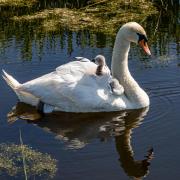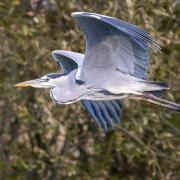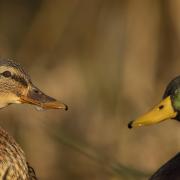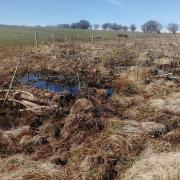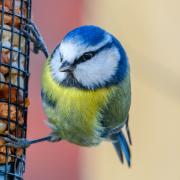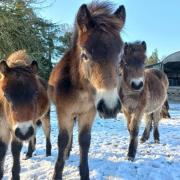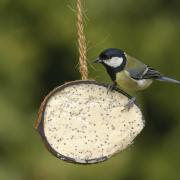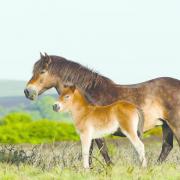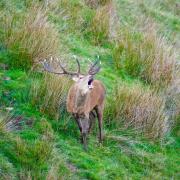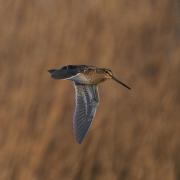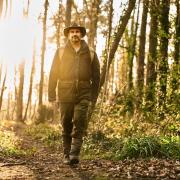PHILIP BATES weighs up the arguments for and against the controversial badger cull

Despite numerous protests and delays, the pilot badger culling to supposedly decrease the spread of bovine tuberculosis began last year across Somerset and Gloucestershire.

Nearly 200,000 cows in Great Britain linked to bovine tuberculosis (bTB) have been destroyed since January 2008 and many believe badgers are the main cause of spreading the disease.
However, the cull remains a highly controversial topic.
Politics of the Cull
“This disease is devastating farming families and businesses across the county and the country,” James Small, National Farmers’ Union (NFU) Somerset County Chairman, says.
However, as a vet with a clinical doctorate in badger diseases, Dr Elizabeth Mullineaux says that, in reality, TB is only affecting a small proportion of badgers: “I looked in detail at our badger casualties over three years and found evidence of tuberculosis in fewer than 10 per cent. Considering the adult badgers we see are by definition those that are diseased or injured, the figure is very low.”
Even then, she says “most animals, including badgers, which become infected with TB (M. bovis) will never go on to develop clinical disease or become ‘infectious’ (ie. a risk to other badgers and cattle).”
The most recent trials were due to last six weeks, but this was extended a further three weeks, and were announced by the Government as successful - despite fewer than 1,000 badgers being killed, far below the original target.
Dr Mullineaux says the cull is purely bureaucratic: “There’s no getting away from the fact that politics, not science, influences the management of TB in cattle and the argument for a badger cull. It’s really my first experience of politics like this and I must admit it’s both shocking and depressing.”
Pauline Kidner, founder of Secret World Wildlife Rescue, agrees that it’s merely “a carrot for the NFU for all the new strategies being introduced. What many don’t realise is that most farmers are not for the cull – indeed, many that rely on tourism to make their farms viable fear for their livelihood.”
Culling or Vaccination?
All parties are keen to explore other options, including cattle management methods and biosecurity to limit interaction, but most notably vaccination.
“Unfortunately, there is no cattle vaccine at the moment,” James Small says. “Field trials of a cattle vaccine and a test to differentiate between a vaccinated and diseased animal are due to start in 2014, which is welcome news, but it will still be 10 years before the vaccine will be available. An injectable badger vaccine is available but will have little impact in areas like Somerset where the disease is endemic, is logistically challenging to administer, and costly as the vaccination trials in Wales have shown.”
Currently, vaccinations can be administered through trapping and injecting badgers, but an oral vaccine is also in development, which, it is hoped, can be placed on bait, particularly at sett entrances. A recent study by Proceedings B, the biological journal for the Royal Society, stated that initial field trials show the oral vaccine can be delivered to a high proportion of the badger population, slowing down the disease’s progression in already-infected badgers and reducing the number of infection bacilli emitted.
“The vaccine is even better than the
one we use for humans!” Pauline enthuses. “The badger only needs to be vaccinated once in its lifetime but we need to go back annually for four years to catch the new cubs and other badgers missed. Already, research is proving that cubs are receiving some protection from the vaccinated group.”
“The best scientific evidence available shows that culling badgers can have a sustained impact on reducing bTB infection rates,” James argues. “Unless we tackle all reservoirs of the disease at the same time, including in wildlife, we won’t be able to stop re-infection occurring, no matter what cattle testing and movement controls are in place.”
Humaneness
This certainly isn’t a new problem: a dead badger was first found on a Gloucestershire farm in 1971, killed by bTB, and since then, many trials and culls have been implemented.
Most prominently, during the Randomised Badger Culling Trial (1997- 2007), some 11,000 badgers were caged and shot. “The Randomised Badger Culling Trial showed culling badgers leads to a reduction of the disease in cattle if it is carried out over a large enough area and for a sufficient length of time,” DEFRA - the Department for Environment, Food, and Rural Affairs – states. “The culls represent part of a comprehensive package of measures that the Government is taking to arrest the increase in new bovine TB cases including cattle control measures, biosecurity and vaccination.”
However, the Trial also concluded that “badger culling cannot meaningfully contribute to the future control of cattle TB in Britain” and that cattle can, in fact, transmit bTB to badgers. But testing cattle for tuberculosis was halted during 2001’s Foot and Mouth outbreak, which saw more than 600,000 cows destroyed.
Testing was largely flawed, however, failing to detect TB in cows three weeks pregnant or in the final stages of the disease. Kidner explains: “The skin test only diagnoses eight out of 10 cattle correctly. So the two remaining may be false positives, which means they will be killed but not have TB when examined. The more dangerous ones are the infectious false negatives which remain in the herd...”
The NFU argues that if measures are not implemented within a decade, it could cost the taxpayer another £1billion just to contain it. But culling isn’t solely an issue of finance.
There were recent reports of illegal shooting and gassing. “Badgers were reported coming up from setts disorientated and retching,” Pauline tells me. “An experiment was held at Portland Bill and due to the reaction to the gas by badgers, all gassing was stopped. It is impossible to assess the size and depth that a sett goes to.”
The Government has been widely criticised for not only failing to recognise inhumane culling as a serious concern, but also for concealing information. Regardless, DEFRA maintains that safety and humaneness are their highest priorities: “Only people with the right skills and appropriate qualifications have been allowed to cull badgers. The monitoring of humaneness includes field observations and post mortems. Once the pilots have concluded, independent experts will scrutinise the results.”
What You Can Do
The NFU offers to share farmers’ stories through videos on the TBFreeEngland website, explaining how bTB has devastated farmland, not just financially but personally. “Being unable to move any cattle on or off your farm, except to be taken to slaughter,” James Small says, “and having to test your herd every 60 days until you’ve had two consecutive clear tests before your business can start operating normally again, also places a huge burden on you and your family.”
Aside from administering vaccines, Secret World is doing its best to spread the word that further culling is not the answer and says that writing to local MPs is a good way of voicing your concerns.
The Stop the Badger Cull e-petition, created by Queen Guitarist, Dr. Brian May CBE, has over 304,000 signatures, forcing a Parliamentary debate.
The Independent Panel of Experts will consider the effectiveness, humaneness, and safety of the shootings and deliver their verdict to The Secretary of State for Environment, Food and Rural Affairs, Owen Paterson, as well as to the public.
“Our evidence is that not all shots have been humane, although we respectfully await the findings of the Independent Expert Panel. In terms of efficacy, the pilot culls have failed Dr. Elizabeth Mullineaux argues. “If badgers are going to be caged-trapped to shoot them, why not vaccinate them instead? The arguments about direct cost fall apart in these circumstances
“Additionally, the substantial cost of policing is removed and many of those protesting against shooting would instead become actively involved in vaccinating.”
This article was first published in the February issue of Somerset Life. To get the magazine delivered every month to your home, subscribe at subscriptionsave.co.uk/SOL or 0844 848 4229



